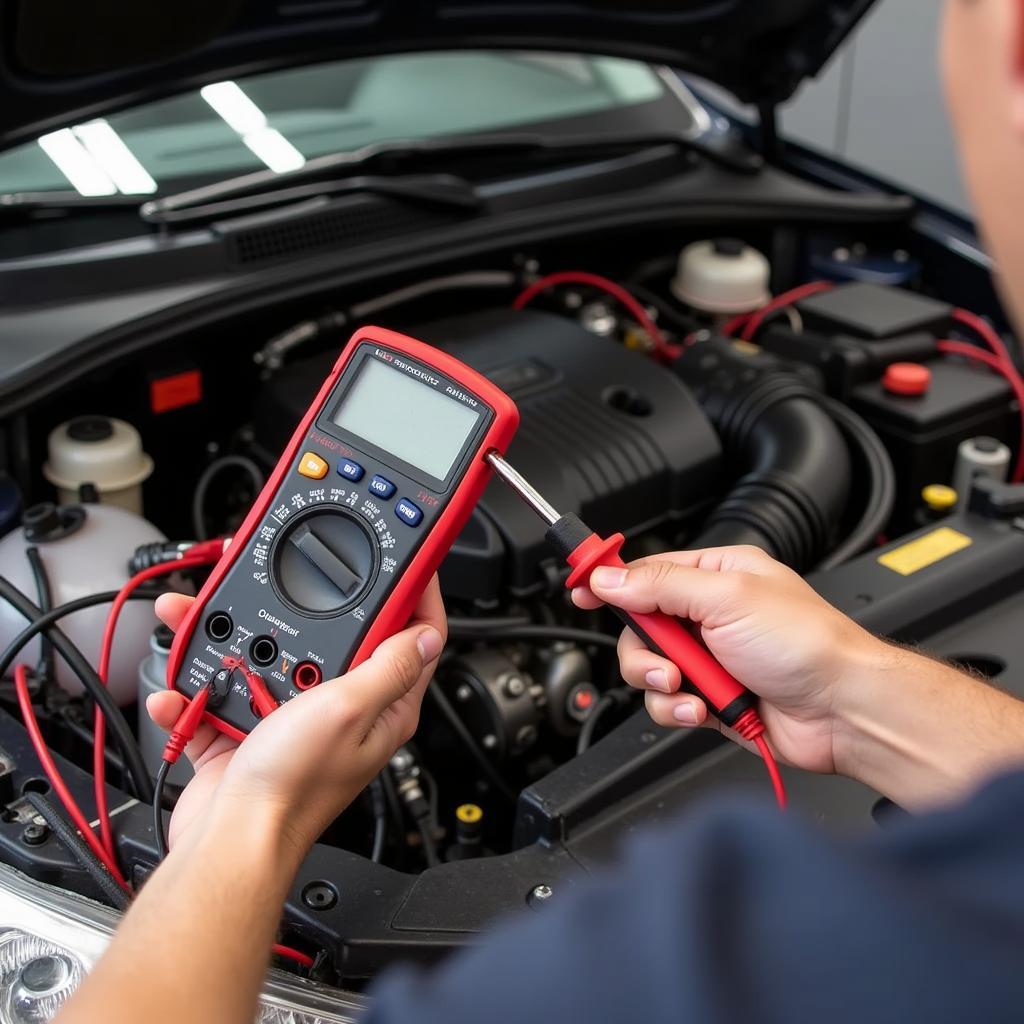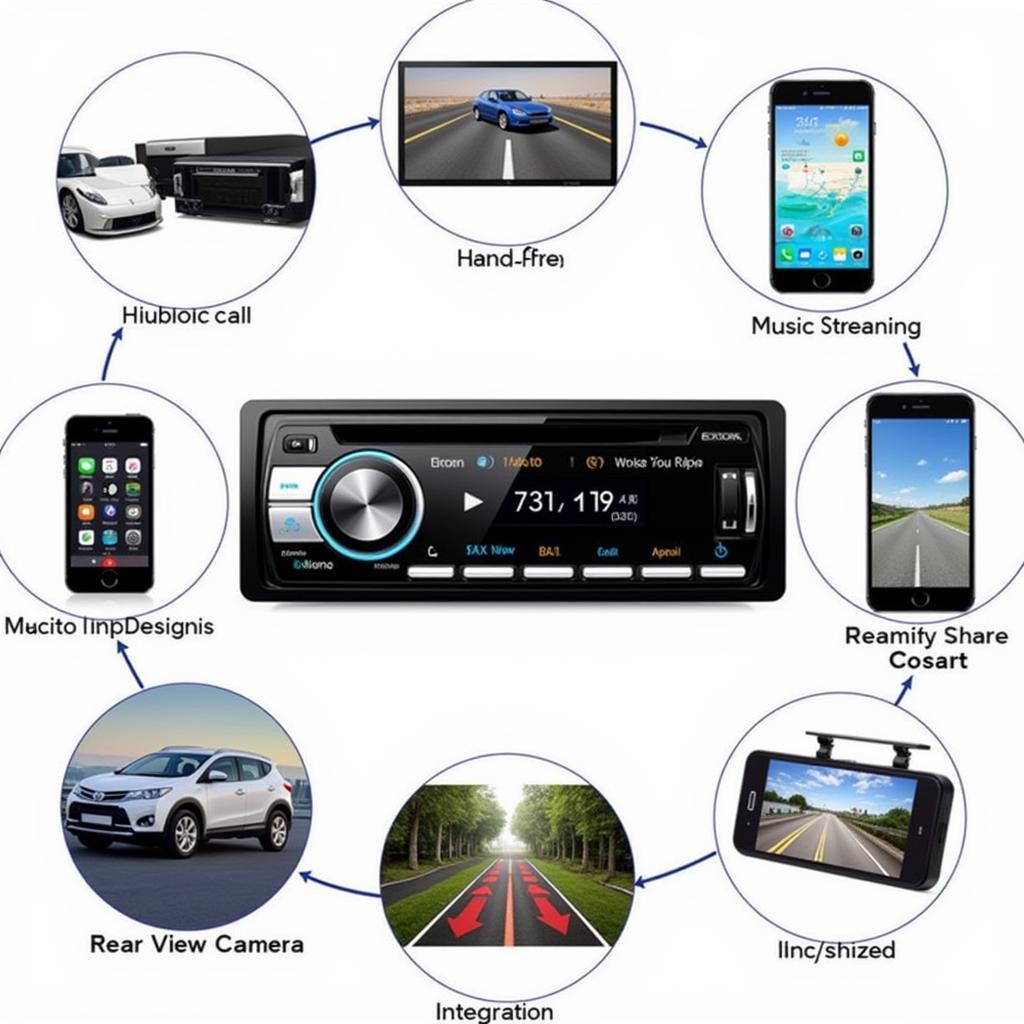A glowing brake pad warning light is a clear sign that you need to get your brake pads checked. But what happens when your brake pads are worn, and the warning light doesn’t illuminate? This situation can be dangerous, masking a potentially serious issue with your braking system. Let’s delve into the reasons behind a non-functional brake pad warning light and the steps you should take to ensure your safety on the road.
Understanding the Brake Pad Warning Light System
Your brake pad warning light is part of a simple yet crucial system designed to alert you when your brake pads are nearing the end of their lifespan. This system typically relies on:
- Wear Sensors: Most modern vehicles have sensors embedded within the brake pads themselves. These sensors are designed to contact the brake rotor when the pad material wears thin.
- Electrical Circuit: When the wear sensor makes contact with the rotor, it completes an electrical circuit. This triggers the brake pad warning light on your dashboard to illuminate.
Reasons Your Brake Pad Warning Light Might Not Be Working
While the system is straightforward, several factors can lead to a malfunctioning brake pad warning light:
- Faulty Sensor: The most common reason is a worn-out or damaged wear sensor. Over time, these sensors can become corroded, broken, or dislodged.
- Wiring Problems: A break in the wiring connecting the sensor to the warning light will prevent the signal from reaching the dashboard.
- Burnt-Out Bulb: Like any other light bulb, the bulb for your brake pad warning light can burn out, preventing it from illuminating.
- Electrical Fault: Issues with the vehicle’s electrical system, such as a blown fuse or a faulty instrument cluster, can also impact the warning light’s functionality.
- Improper Installation: If your brake pads were recently replaced, the new pads might not have wear sensors, or the sensors may have been installed incorrectly.
Dangers of Ignoring a Missing Warning Light
Driving with worn brake pads and a non-functional warning light can have serious consequences:
- Reduced Braking Performance: Worn brake pads significantly reduce your vehicle’s ability to stop effectively, increasing your stopping distance and the risk of accidents.
- Rotor Damage: Driving with worn pads can lead to the metal backing plate of the brake pad grinding against the rotor, causing costly damage.
- Brake Failure: In extreme cases, completely worn brake pads can lead to total brake failure, putting you and others on the road at immense risk.
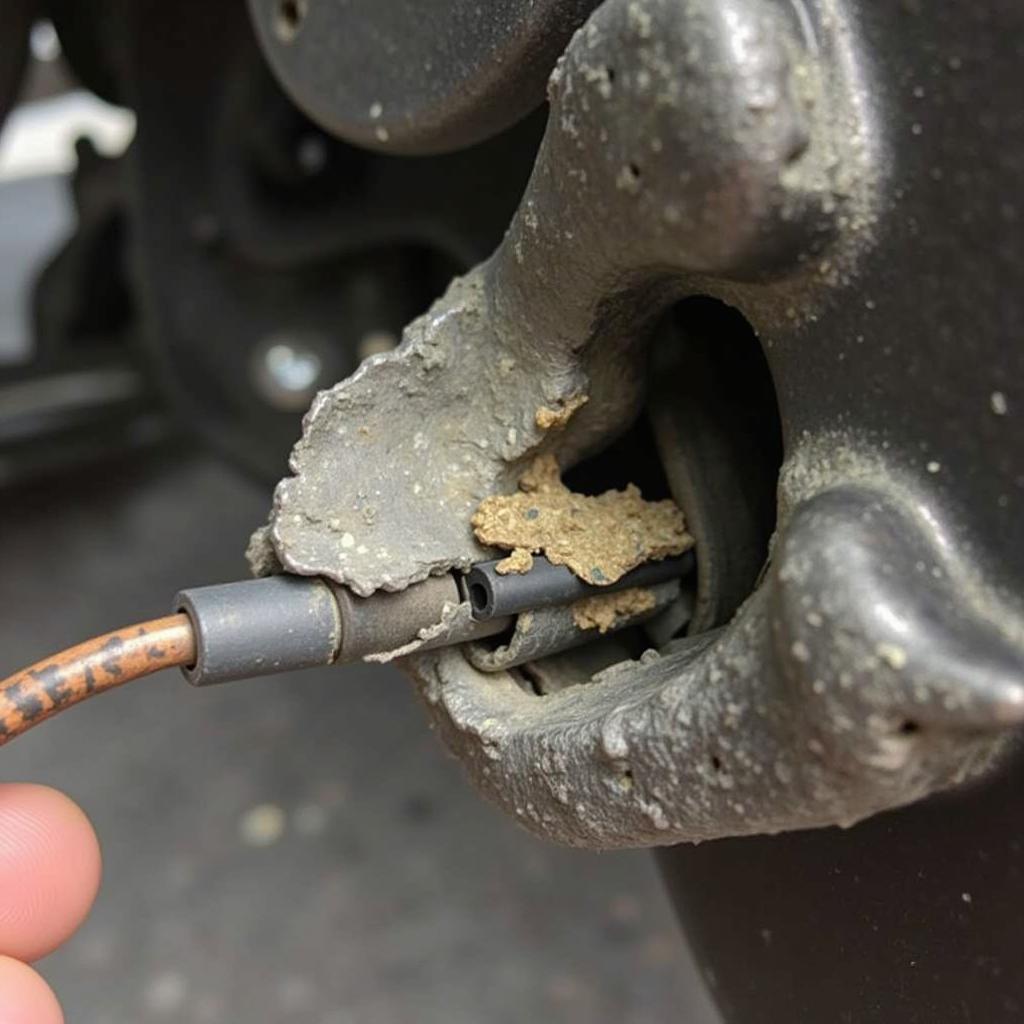 Brake Pad Wear Sensor Failure
Brake Pad Wear Sensor Failure
What to Do If Your Light Doesn’t Come On
If your brake pad warning light isn’t coming on, don’t ignore it. Here’s what you should do:
-
Check Your Owner’s Manual: Refer to your vehicle’s owner’s manual for specific information about your brake pad warning system and recommended maintenance intervals.
-
Inspect Your Brake Pads: If you’re comfortable doing so, you can visually inspect your brake pads. Look for signs of wear, such as a thin pad thickness or grooves in the pad material.
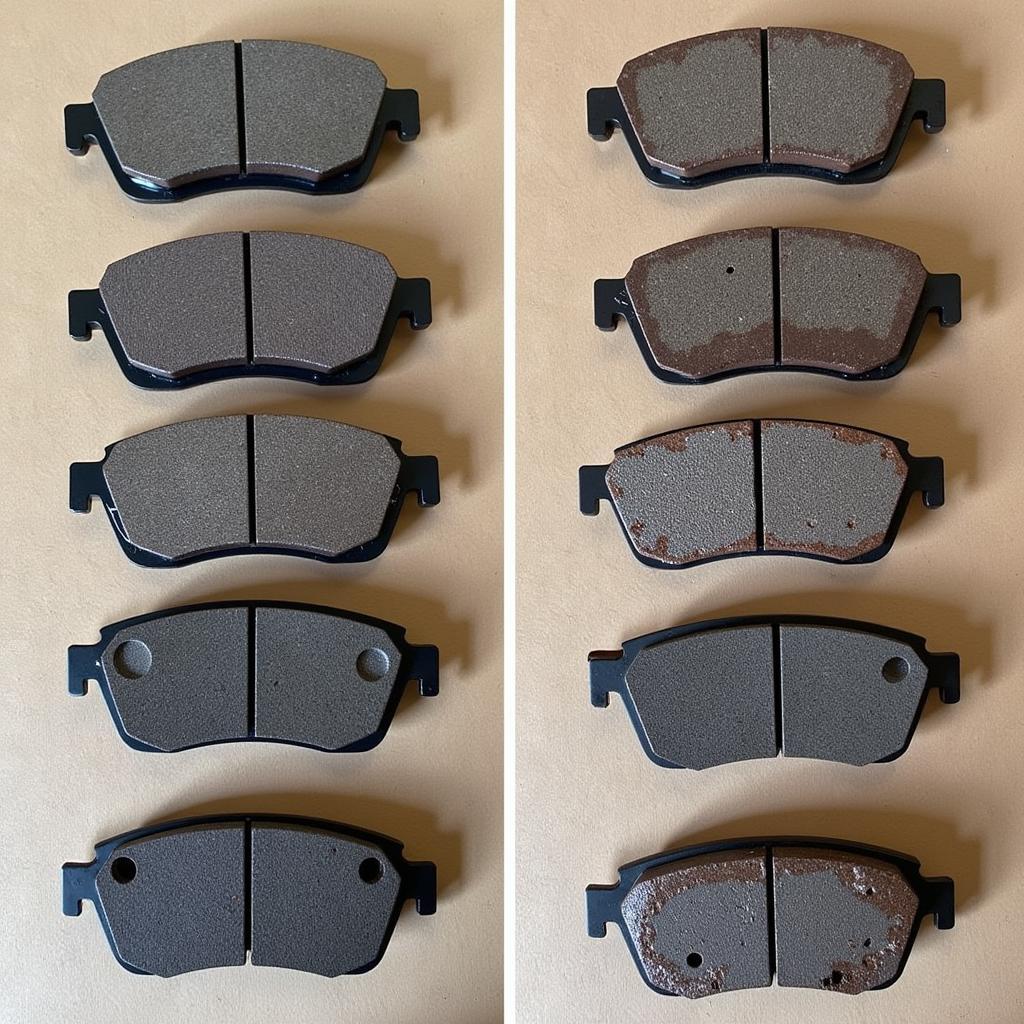 Worn Brake Pads Compared to New Brake Pads
Worn Brake Pads Compared to New Brake Pads
- Visit a Qualified Mechanic: The safest course of action is to have your brake system inspected by a qualified mechanic. They can diagnose the issue with your warning light and recommend any necessary repairs.
“A non-functional brake pad warning light is not something to ignore,” warns John Smith, a senior automotive electrician at ABC Auto Services. “Even if you haven’t noticed any braking issues, it’s crucial to have your system checked to ensure your safety and prevent potentially costly repairs down the road.”
- Don’t Delay Repairs: If your mechanic diagnoses a problem with your brake pads, wear sensors, or warning light system, address the issue promptly.
Regular Maintenance is Key
Prevention is always better than cure. Here are some preventative measures to keep your brake system in top shape:
- Adhere to Scheduled Maintenance: Follow your vehicle manufacturer’s recommended maintenance schedule for brake inspections and fluid changes.
- Listen for Unusual Noises: Be attentive to any unusual noises coming from your brakes, such as squealing, grinding, or scraping.
- Address Brake Issues Promptly: If you experience any changes in your brake pedal feel, such as sponginess or increased travel, have your brakes checked immediately.
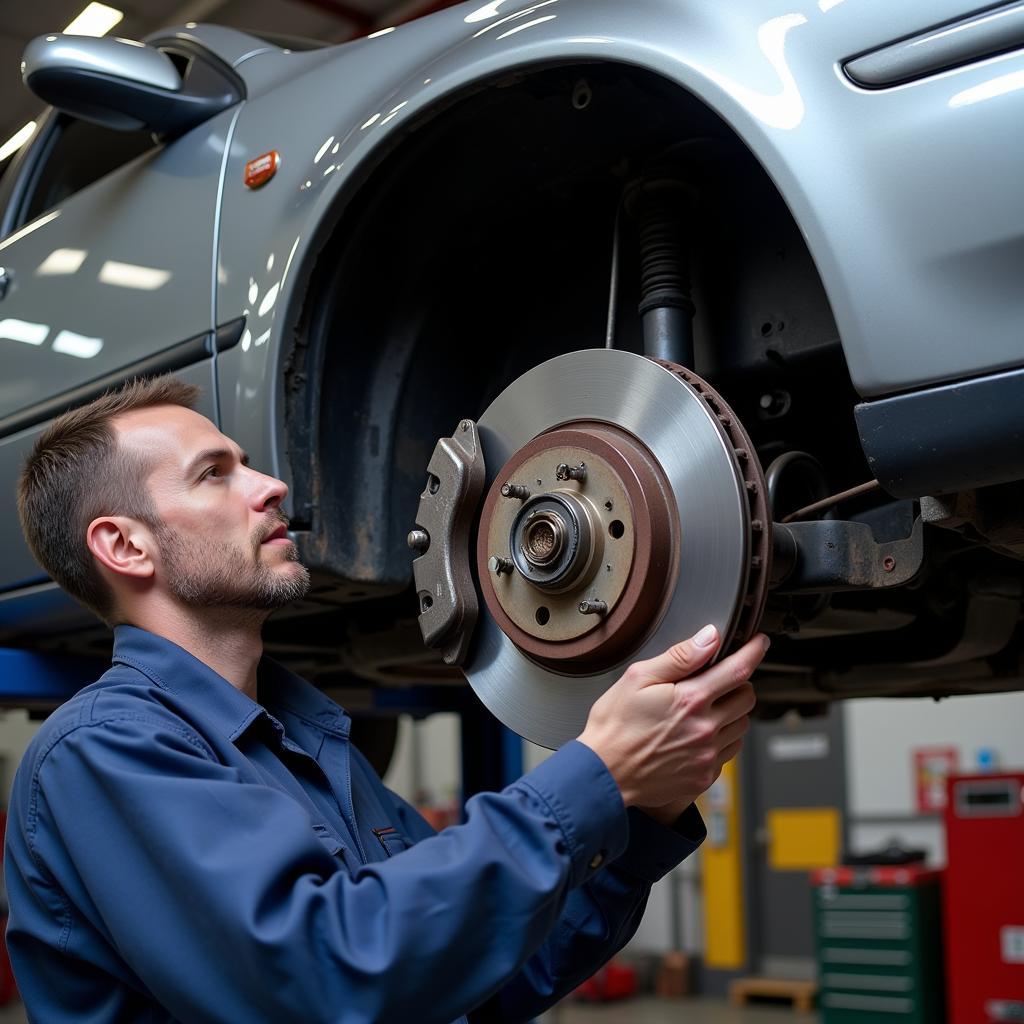 Car on a Lift for a Brake Inspection
Car on a Lift for a Brake Inspection
Conclusion
A malfunctioning brake pad warning light should never be ignored. It’s a potential sign of a serious underlying issue with your braking system. By understanding how the system works, recognizing the reasons for failure, and taking prompt action, you can ensure your safety on the road and avoid costly repairs. Remember, regular maintenance and prompt attention to any brake-related concerns are essential for a safe and enjoyable driving experience.


